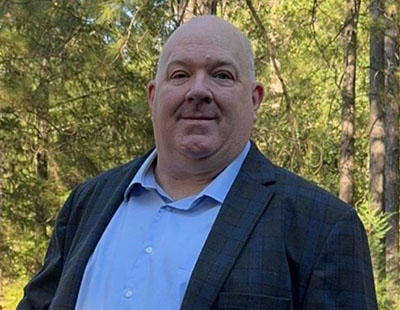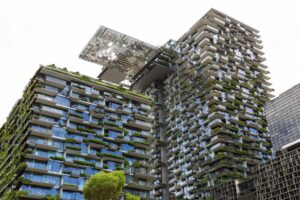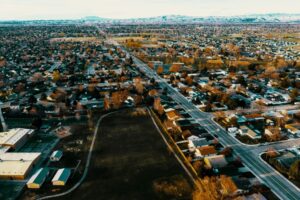Why San Francisco’s (Almost) Back


Since the COVID-19 pandemic, San Francisco has faced well-documented challenges, often serving as a cautionary tale in national media. However, clear signs of a commercial real estate resurgence are emerging.
While the city experienced a sharper downturn than most markets and still has ground to recover, recent political and business shifts have fostered renewed stability and optimism. This positive momentum is evident across the office, multifamily and retail sectors and supported by recent data from Colliers, Placer.ai and others. In our work investing in and operating mixed-use multifamily assets, we’re seeing firsthand the rebound in housing demand and upward pressure on rents.
READ MORE: 4 Insights on How to Respond to the Era of Uncertainty
Return-to-office trends improving
Return-to-office momentum is steadily growing in San Francisco, propelled by coordinated public and private-sector initiatives. In an effort to enhance public services and invigorate downtown, Mayor Daniel Lurie has mandated city employees return to offices at least four days a week beginning April 28. Gov. Gavin Newsom similarly directed California state agencies to adopt a four-day in-office policy by July 1. Private employers, such as Salesforce and Gap Inc., are reinforcing hybrid schedules and increasing in-office requirements, substantially revitalizing downtown economic activity. These combined efforts have generated measurable improvements: Placer.ai’s most recent reporting showed office visits in San Francisco increased 9.6 percent year-over-year. That ranks the city third nationally after Boston and Washington, D.C. This resurgence in office attendance is driving weekday business activity and contributing significantly to local economic recovery.
Apartment rents on the rise
While rents in San Francisco have yet to reach pre-pandemic peaks, the apartment market is experiencing steady and meaningful recovery. Within our portfolio, we’ve observed increased preleasing activity, growing waitlists and multiple competing applications for units in desirable neighborhoods. April data from Zumper shows a 4 percent year-over-year rise in the city’s median rent, reaching $3,280 per month, with one-bedroom units seeing an even stronger 6 percent monthly increase to $3,130. Renewed investor interest from both institutional and private sectors further underscores the market recovery, aligning with the rising demand we see for our property management services.
Tech and AI sectors fueling business growth
San Francisco’s technology and artificial intelligence industries have become central drivers of office leasing activity, filling gaps left by pandemic-driven vacancies. Globally recognized as an AI innovation hub, San Francisco and the Bay Area are experiencing significant growth among both emerging startups and established firms. Colliers’ latest year-end report noted the city’s first decline in office vacancy rates since 2019, despite a slight increase in Q1 2025. Sublease vacancies fell to 6.1 percent, their lowest in two years, and average price-per-foot for office sales is rising steadily.
Large-block transactions exceeding 100,000 square feet have been instrumental, but smaller AI companies are also quickly scaling operations. For instance, AI startup Tools for Humanity recently leased the entire 87,000-square-foot building at 600 Townsend St., significantly expanding from its previous 10,000-square-foot space. Databricks secured a notable 150,000-square-foot lease at 1 Sansome St., while Google renewed and expanded its footprint to 555,000 square feet at 345 Spear St..
A more business-friendly city
Under new political leadership, San Francisco has markedly embraced a pro-business approach, with increasingly visible benefits. One of the city’s earliest moves was establishing an “entertainment zone” along Front Street downtown. After just three successful events last year, the city reported that participating businesses experienced dramatic sales increases ranging from 700 percent to 1,500 percent, prompting the city to expand the initiative to five additional streets.
The city is also easing its longstanding restrictions on chain retailers. Following proposals from city supervisors, the planning commission recently recommended removing the formula-retail ban along a 23-block stretch of the busy Van Ness Avenue corridor, with additional commercial areas under consideration.
Mayor Daniel Lurie, elected on a platform prioritizing business support and enhanced public safety, has notably increased police presence citywide. Targeted enforcement efforts against open-air drug use have led to a 40 percent year-over-year rise in drug-related arrests. In the downtown South-of-Market area specifically, drug-related arrests or citations increased by 167 percent, prompting city officials to highlight successful efforts in reclaiming public spaces for community use.
Changing perceptions among investors
Investor sentiment toward San Francisco is notably shifting, driven by firsthand experiences and evolving market conditions. Investors and lenders visiting the city often express surprise at the vibrancy and resilience evident in neighborhods and the central business district. Despite lingering market volatility, an increasing number now openly regard San Francisco as offering its best investment opportunities in over a decade.
Several key factors bolster this renewed confidence:
- Robust tech and AI sector growth: The city continues to attract significant venture capital investment, driving demand for both commercial and residential real estate as technology firms expand.
- Luxury market resilience: San Francisco’s luxury property segment, particularly homes priced above $5 million, remains strong, buoyed by tech and cryptocurrency wealth, resulting in competitive bidding and rapid sales.
- Infrastructure and urban development initiatives: Major projects, such as the $3.4 billion Caltrain extension into downtown, significantly enhance connectivity, making the city more attractive for residents and investors alike.
San Francisco is clearly demonstrating signs of economic recovery across multiple sectors with the help of a revitalized local economy, rising rents, increasing office occupancy and proactive city policies. By continuing to address ongoing challenges while leveraging inherent strengths, the city is well-positioned for sustained and robust recovery.
Jay Pedde is senior vice president of operations at Veritas Investments Inc.
The post Why San Francisco’s (Almost) Back appeared first on Commercial Property Executive.




